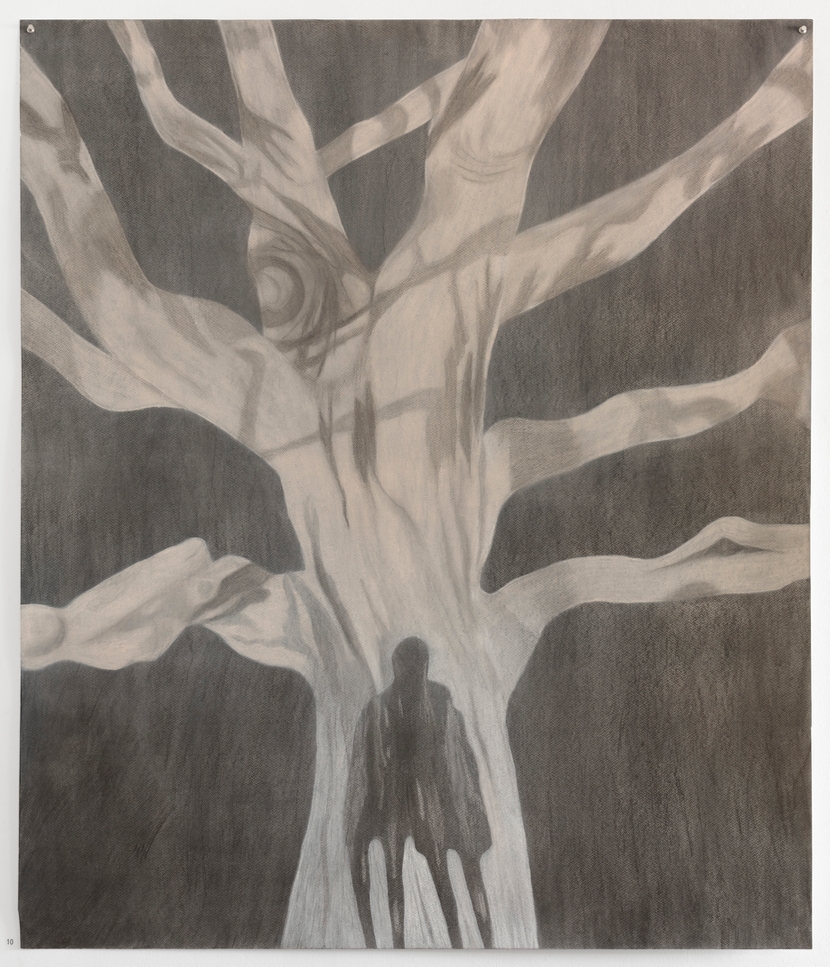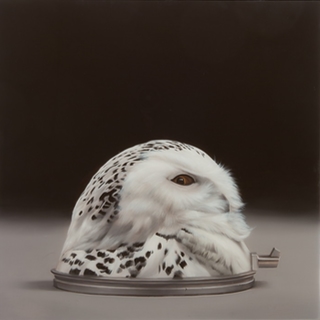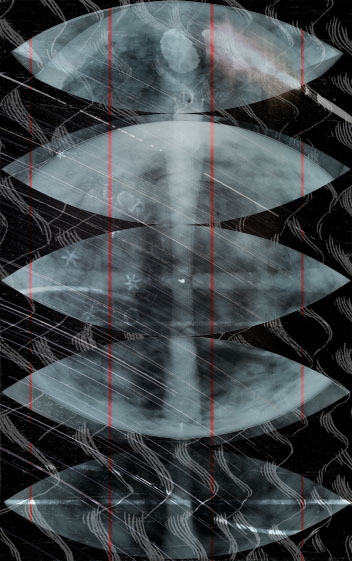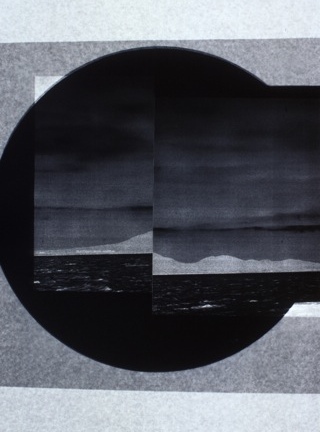Exhibitions
This collection of exhibitions, beginning with the most recent, traces the development of Spear’s work over a number of years. It reveals the way her work has evolved over time, and the various relationships that have emerged between concept, media and process during the making of these works.
Listening Earth

16 August — 2 September 2023
Stephen McLaughlan Gallery, Melbourne
Fields have eyes and forests have ears and I will hear if I remain silent and listen.
Biosphere – a sense of belonging

3–20 November 2021
Stephen McLaughlan Gallery, Melbourne
Beneath Nature’s seductive surfaces lies a deep sense of pathos revealed in the destructive power of humanity.
Umwelten – eco-fields & other universes

14–31 August 2019
Stephen McLaughlan Gallery, Melbourne
Speculations about the possibilities for other habitats or other universes beyond our sensorium.
Space
50 years since man first stepped on the Moon

20 July – 1 September 2019
Gippsland Art Gallery
A group exhibition curated by Erin Mathews
Explore the romance of space through visual culture produced during and after the Moon landing.
The works span the furthest reaches of the human imagination to the reality of space travel. Original photographs from NASA of the moon landing take pride of place, together with works from contemporary artists who respond to the romance and unknown of space.
The Moon

14 June – 1 September 2019
Geelong Gallery
Curator: Lisa Sullivan
20 July 2019 marks the 50th anniversary of the first Moon landing and the first steps taken on the lunar surface.
The exhibition includes historical works created when the Moon could only be viewed from afar, works from the era of the 1960s space race, and more contemporary responses informed by the imagery and scientific knowledge acquired through space exploration.
Parallel Universe
Felicity Spear (curator)

3–27 April 2019
Stephen McLaughlan Gallery, Melbourne
What if beyond our dislocated dreams we could sense a parallel universe made possible because we could see more of the information which we cannot now see?
Fossil - a slow-acting violence
Felicity Spear (curator)

2–19 August 2017
Stephen McLaughlan Gallery, Melbourne
Through the trope of the fossil the artists remind us that while we may be seduced by nature’s intensely seductive surfaces, thinly exposed beneath them is a deep pathos embedded in the destructive power of nature, including ‘human nature’.
Sky Lab: Kepler’s Dream
Felicity Spear (curator)

La Trobe University Visual Arts Centre Gallery, Bendigo 2016
We live in a vulnerable space capsule called Earth and we keep extending our reach through complex technologies, searching for faint whispers from beyond . In the17th century the German astronomer Johannes Kepler straddled two worlds of thinking: the rational and the mystical. He wrote, Somnium, (The Dream,) a guide for an adventurous lunar expedition, and perhaps the first science fiction. Referencing Kepler the artists bring the physical universe to life through the lens of history, philosophy and science.
Orbit: The Kepler Suite
Felicity Spear

Stephen McLaughlan Gallery, Melbourne 2016
In this series of images I explore models associated with the concept ‘orbit’. The Kepler Suite emphasises the value and complexity of the physical world in terms of sky situated knowledge to create a sense of, or feeling for, space, time, geometry and matter and the hidden traces and forces which are embedded in the idea of orbit.
Sky Lab: lines of sight and forces of attraction (2015)
Felicity Spear (curator)

The Counihan Gallery in Brunswick, Victoria 2015
This exhibition draws together a group of artists who are interested in the way in which we receive and interpret the cosmic signs in our everyday world. With a focus on the emanation and manipulation of light, the medium which connects us to the Universe, they create speculative works which reference various systems of knowledge, the relationships between the natural and constructed worlds, and between Earth and sky.
Future Tense
Felicity Spear (curator)

Stephen McLaughlan Gallery, Melbourne 2014
The exhibition Future Tense draws together a group of artists who, in various ways, ask two questions. What might the inhabitants of the future see when they look back at our time? How do we envisage events yet to happen?
The Observatory

Stephen McLaughlan Gallery, Melbourne 2013
Working with painting as a speculative medium in a space between art and science, Spear looks for relationships between sky-situated knowledge, observational technologies and natural phenomena, which are often not accessible to the full range of the senses.
Remote sensing technology reveals hidden knowledge of places we are unable to inhabit. The process of mapping these remote places stands in for the immediacy of first- hand sense experience, but it is always embedded in the subjective conditions of human thinking. And in a world networked together through communications technology, where every ‘there’ seems now also to be ‘here’, we increasingly see and decode through a machine produced visibility.
Sky Lab 2013
Felicity Spear (curator)

Latrobe Regional Gallery, Victoria 2013
The artists represented in Sky Lab direct their gaze beyond our planet to create speculative works about our relationships to outer space and sky-situated knowledge.
Sky Lab: from where you stand (2011)
Felicity Spear (curator)

Stephen McLaughlan Gallery, Melbourne 2011
Sky Lab: from where you stand experiments with models and concepts within the culture of sky-situated knowledge.
Sky Lab (2009)
Felicity Spear (curator)

Stephen McLaughlan Gallery, Melbourne 2009/10
Sky Lab was developed to locate considerations in art practice of sky-situated knowledge.
Beyond Visibility: Light and Dust
David Malin & Felicity Spear (curators)

Monash Gallery of Art, Melbourne 2009
University of Technology Sydney Gallery 2009
The work of two artists and an astro-photographer come together to raise awareness of the diverse ways in which ideas about Space and the Universe can be understood.
Shared Sky
Allison Holland & Stephen Gilchrist (curators)

The Ian Potter Centre: NGV Australia at Federation Square
13 March–2 August 2009
A celebration of the International Year of Astronomy.
Out There — in light of remote possibilities

Monash University Faculty Gallery, Melbourne 2007
Speculative mappings revealing phenomena beyond the visible, ‘out there’ in the night sky.
A range of media, digital prints, paintings, a sound work, a video and an artist’s book.
Which Way Is Up?

Fermynwoods Contemporary Art Gallery, United Kingdom 2006
University of Hertfordshire Art and Design Gallery, United Kingdom 2007
The subjective territory of mapping and maps discovered through both historical and contemporary cartography, art and science.
Night Journeys

Stephen McLaughlan Gallery, Melbourne 2004
The art and science of the journey. Fundamental to way-finding is our reliance on the processes of navigation and mapping to determine location, movement and communication.
Traversing Space

Stephen McLaughlan Gallery, Melbourne 2002
The navigational model of the sextant, the mapping of space using optical instruments, aerial views and a local landmark, the You Yangs Hills.
Fenestration

Stephen McLaughlan Gallery, Melbourne 2000
The window structures of both Melbourne’s Nicholas Building and the Gallery situated within, utilizing the photographic process of pin-hole photography.
Illuminating Evidence

The Geelong Gallery, Victoria 2000
Is everything as it seems? Uncovering the more obscure life of the museum using x-ray, pin-hole photography, painting, light, peep-holes and mirrors, engaging the viewer in a process of contemplation, discovery and reconstruction.
Hyphen

West Space, Melbourne 1999
The optics of the camera obscura referenced through the use of pin-hole photographs, and fragments of mechanically reproduced art-historical images.
Concealment

Temple Studio, Melbourne 1999
Truth lies beneath the surface in the realm of the hidden.
A group exhibition curated by Tyra Hutchens.
Sounding

St. Stephen’s Church, Richmond, Melbourne 1998
Minimal paintings, low lying boxes, attenuated pillars and leaning serial forms, overlaid with photographic references, flashes of light and veils of shadow.
Lodged

Temple Studio, Melbourne 1998
Photography could be regarded as an aide-memoire, reconstructing the past through process and image in order to talk about other permutations of time and space.
Punctum

Stephen McLaughlan Gallery, Melbourne 1998
Paintings, references to photography and digital reproduction technologies, industrially fabricated objects, minimal, serialized, fragmented, abstracted, reflective, distorted.
Paris par chance

Cité des Arts Studio, Paris 1997
Mapping the environs of the Cité des Arts with pin-hole photographs.
Fold

Stephen Mc Laughlan Gallery, Melbourne 1996
Paintings that revisit aspects of Dutch visual culture in the 17th century.
Re-inscription

Linden Gallery, St. Kilda Arts Centre, Melbourne 1995
Quince, Cabbage, Melon and Cucumber (c. 1602), the Spanish painter Juan Sanchez Cotan’s iconic painting, disappearing through the photocopier into another space.